
views
Preparing Your Project

Gather your materials. You will need an empty film canister, modeling clay, and disposable cups to make the volcano. You will use baking soda and white vinegar to make the lava. Food coloring will color the lava if you choose to use it. You should also get a Styrofoam or plastic tray to do the experiment on for easy clean up. Using disposable cups and a tray will allow for faster and easier clean up. A film canister is the packaging container that holds camera film. You will need a regular 35 mm film canister. You could also use a baby food jar as a substitute.
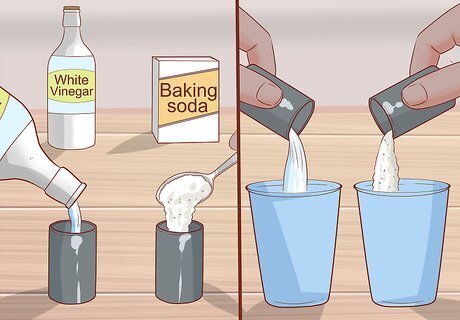
Measure out equal parts baking soda and white vinegar. Use the film canister as a guide. Fill the canister with baking soda and then pour that baking soda into a cup. Wipe out the canister to remove any residual baking soda. Now, fill the empty canister with vinegar and pour that vinegar into a separate cup. Be sure to keep the baking soda and vinegar separate at this time so that they do not react before you are ready. The total amount of baking soda and vinegar used for the experiment is not important. The important part is that you use equal amounts of baking soda and vinegar.
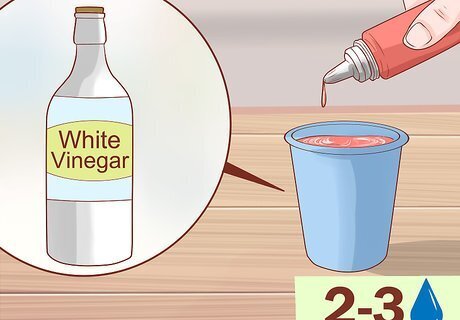
Color the vinegar with red food coloring. If you wish to make the “lava” red in color, add red food coloring to the cup of vinegar. Add 2-3 drops of food coloring, or enough food coloring to make the desired color. The coloring does not affect the reaction that takes place. The food coloring is not necessary to perform the experiment but is there for visual effect.
Building a Volcano
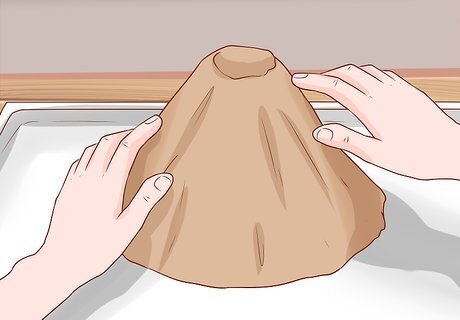
Construct a volcano. Use the modeling clay to build a volcano structure. You can make the volcano as large as you want. The taller your volcano is the more surface your lava will have to flow down.
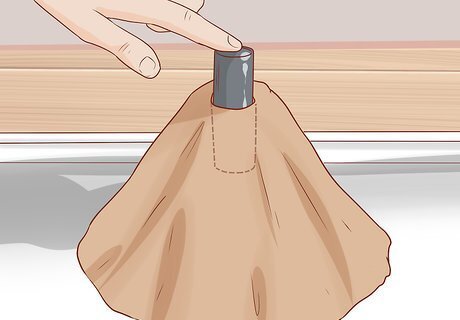
Push the canister into the tip of the volcano. Make sure that you have removed the lid and push it down with the open side facing up. Make the top of the canister flush with the top of the volcano. Do not pack any clay into the center of the canister. You need to leave the canister empty.

Fill the volcano with baking soda. Pour the baking soda that you have set off to the side into the canister. This will be the first reactant in the center of your volcano. Be careful not to get any baking soda in your eyes. Use protective eye gear.
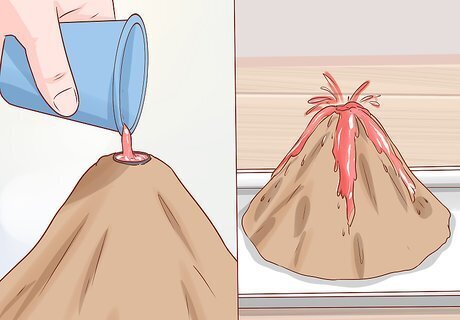
Pour the vinegar into the volcano. Using the colored white vinegar that you have set off to the side, pour the vinegar into the volcano’s center. The vinegar will react with the baking soda and cause an “eruption”. Stand back as the volcano erupts. While it is not a dangerous reaction, it will be messy.
Understanding the Experiment
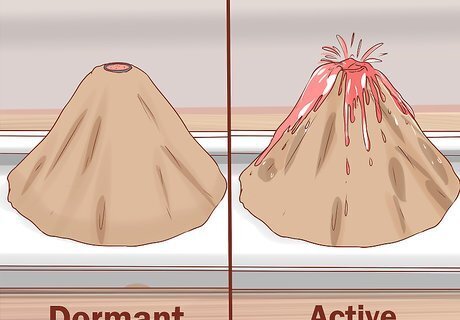
Understand the difference between a dormant and active volcano. Your volcano filled with baking soda represents a volcano that is dormant. Once you add the vinegar, your volcano is now active. While this is not how an actual volcano works, the experiment does give the appearance of a volcano. You could explain the the mock volcano is actually just a visual aid. Say something like “This model volcano serves as a good visual of a real volcano, even though the eruption is created by a chemical reaction instead of extreme pressures.” A real volcano erupts due to the pressure that the rocks put on the magma inside of the volcano.

Understand the chemical reaction. The vinegar and baking soda react in an acid base reaction. When combined they form carbon dioxide gas. The carbon dioxide gas rises like bubbles in a soda. This creates the “eruption” or “explosion” effect of your volcano. You could explain this by saying something like “Gas is generated rapidly through the chemical reaction, and is unable to escape the volcano at the same rate. This causes pressure to build and forces the contents of the volcano out the top violently, which looks similar to a real volcanic eruption.”
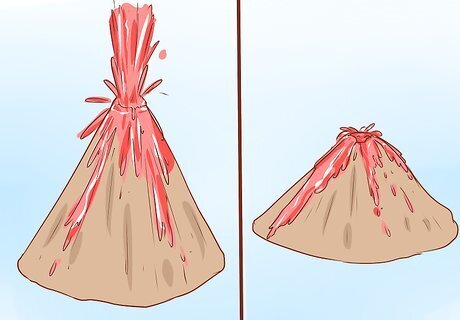
Repeat the experiment with different volcano shapes. Notice that when you change the shape of the volcano it will change how the volcano erupts. The lava might spew differently or roll down a different side of the volcano. Explain that the different shapes will affect how the volcano erupts and how the “lava” flows. For instance you might say “If we build a steep volcano with a narrow opening, the eruption will be violent and then run down the sides of the volcano quickly. On the other hand, a short volcano with a wide base and wide opening will allow the lava to flow out more slowly and flow down the volcano at a slower rate.”















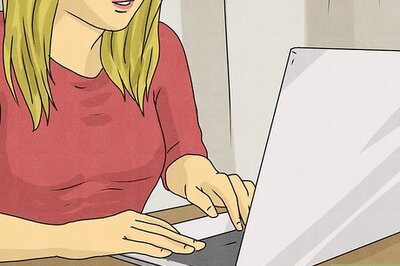


Comments
0 comment